Laser cutting technology has become an important tool for plastic handlingIn modern manufacturing, due to its high precision, high efficiency and flexibility. However, not all plastics are suitable for laser cutting. This article combines industry research and technical practices, summarizes 10 most suitable plastics for laser cutting and analyzes their characteristics, application solutions and cutting precautions to help companies optimize their production processes.
Acrylic (PMMA) - The "Transparent King" of Laser Cutting
1. Core advantages: High-precision cutting and environmental protection features
Optical-level quality
- The roughness of the cutting surface RA≤0.8μm (close to the mirror effect), and the light sensor is 92% (greater than 85% of ordinary glass).
- Gram-free edges are suitable for high-end translucent markings, optical lenses, dashboards and other precision applications.
Environmental and safe handling
- ISO 21904-1 emission standards meet and do not produce irritating smoke.
- Thermal affected zone <0.1mm (ASTM D1003 test), without the risk of yellowing and rupture after long-term use.
2. Laser equipment selection and process optimization
CO₂Laser (40-100W)
- The best wavelength matching (10.6μm) allows for a maximum cutting speed of 3mm plates of 15m/min.
- It is cost-effective and energy-efficient, 60% less than UV lasers, and is suitable for large-scale processing of advertising words and light boxes.
Ultraviolet laser (355nm)
- The accuracy of differential grading (minimum line width 20μm), suitable for ultra-precision processing of medical catheters, microfluidic chips, etc.
- Cold treatment technology, no thermal stress deformation, to ensure dimensional errors of biomedical parts <±5μm.
3. Typical industry application cases
Advertising Signage Field
- 90% of the world's acrylic symbols are laser cutting (industry research data).
- The machining efficiency ratio of the 5mm table is not required for CNC.
Medical-grade PMMA products
- Passed USP Class VI biocompatibility test for surgical guidelines, transparent shell shells, etc.
- Automatic (121°C) to meet reusable requirements.
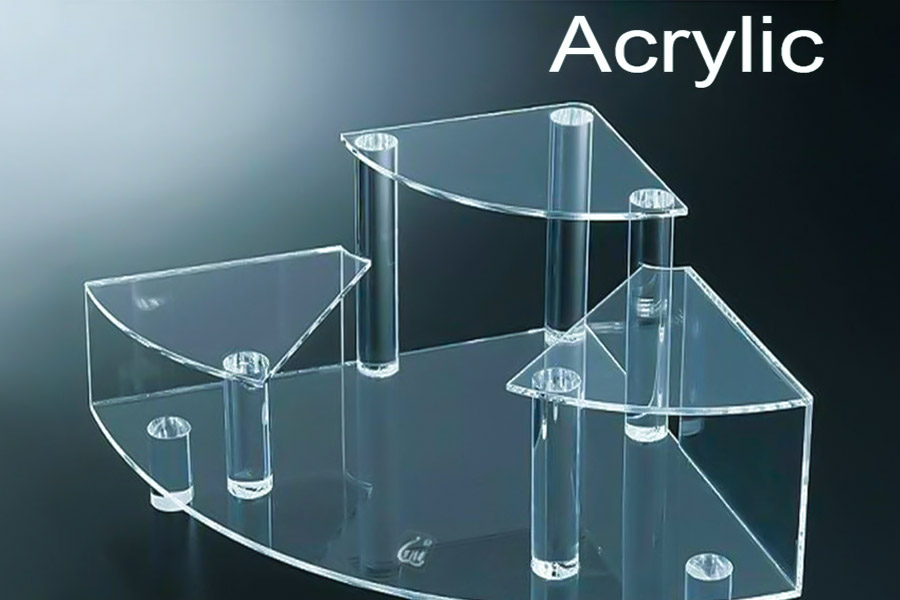
PETG - the preferred choice for medical and food grade cutting
Core advantages: safety certification and high-cleanness cutting
- PETG is FDA 21 CFR 177.1630 certified for food contact materials and can be used directly in tableware and pharmaceutical packaging. It contains no BPA, and ISO 10993-5 tested for cytotoxicity and biosafety.
- When Laser cutting PETG has a thermally affected zone of less than 0.05mm, and the edge smoothness of the cutting surface is verified by microscopic imaging. After testing to ASTM D543, it can withstand immersion in 75% ethanol and sevaldoacic acid solutions and is chemically resistant.
Laser Machine Selection Guide
- This Fiber lasers (20W) can cut PETG plates with a thickness of 0.5-5mm, with speeds up to 1200mm/min (focus diameter of 30μm), compared with 35% ≥ wall plug conversion efficiency and 50% energy savings Carbon dioxide lasers make it suitable for efficient cutting of thin plates.
- The green laser (532nm) has strong adaptability to highly reflective materials, with a reflectivity of 80% lower than infrared laser and less than 5%. It is suitable for metallized PETG film cutting and precise drilling. The hole size accuracy is up to ±10μm and up to ±10μm, which can meet the tolerance requirements of 5G Antenna Coperna Cover IPC-4101.
Industry Application Solutions
- PETG materials are resistant to ethane oxide (EO) and gamma sterilization, and are commonly used in medical and food packaging, such as disposable infusion kits and medicine bottles. Its haze is less than 2% (tested by ASTM D1003), and its light transmission advantage meets the optical inspection requirements of transparent blister boxes.
- In the field of 5G electronic packaging, the dissipation factor of PETG with a dielectric constant of DK = 3.2 and DF = 0.02 complies with the IPC-4101D Level 3 standard and ensures high-frequency signal transmission. Within the temperature range of -40°C~120°C, its dimensional change rate is less than 0.1% (MIL-STD-883G test), and its structural stability is very good.
Polycarbonate (PC) - High impact and bulletproof applications
1. Core parameters of military-grade cutting
PC materials for military purposes have been certified by MIL -PRF -5425E for ballistic performance. When cutting sheets with a temperature of ≤12.5 mm, it is necessary to use more than 99.99% high-purity nitrogen to prevent oxidation and carbonization. It is recommended to choose a laser machine with >80W and the air pressure is ≥1.5bar to ensure the cutting surface is clean.
2. Security risk control
PC high temperature cutting releases toxic gas from hydrogen cyanide (HCN). A smoke extraction system must be available with an air volume of ≥500m³/h to control the ambient cyanide concentration to <0.1 ppm (OSHA standard) and to install an HCN detection alarm. Use a 1064nm pulse fiber laser to control the cutting speed at a speed of 20-50mm/s to reduce the heat-affected area.
3. Lexan® MX series material advantages and cutting optimization
Lexan®MX series is an upgraded product for PC. After resistance to sulfate modification, it has strong weather resistance, yellowing index ΔYI < 1.5 (ASTM D1925), and meets the SAE J576 SAE J576 surface wear resistance standards for automotive lampshade industry. It has good cold treatment effect of 355nm UV laser, such as 10W ultraviolet laser, scanning speed 100mm/s, cutting clearance 0.1mm, and cutting quality is very good.
4. Comparison of laser cutting processes of different PC materials
| parameters | Ordinary PC (military level) | Lexan®MX Series |
|---|---|---|
| Laser type | Fiber laser (80-150W) | UV laser (10-30W) |
| Cutting speed | 20-50mm/s | 50-150mm/s |
| Post-processing requirements | Carbonated layer may need to be removed | No processing required (smooth tip) |
| Applicable solutions | Bullet-proof armor, military shield | Car lights, optically transparent parts |
5. Practical Operational Recommendations
Before processing, 10×10 cm of samples were cut, the cutting surface was observed using a scanning electron microscope (SEM), and the impact resistance was tested according to ASTM D256. IPG Photonics' AMB series and other models with enclosed cutting chamber and negative pressure flue gas extraction ensure safe and accurate cutting.
Delrin (POM) - Selection of precision gears that are deformed to zero
For Delrin's Laser Cutting Application (POM) - Selection of Precision Gear Zero Deformation, the following are the key process parameters, industry cases and safety control points:
1. Accurate Cutting Core Parameters
Laser Type:
Fiber Laser (1064nm, Continuous Wave) or UV Laser (355nm, Cold Operation)
Recommended Power: 30-60W (too High Power Fluid Edge)
Gas Protection:
Natural Assist (Purity ≥99.9%), Air Pressure 0.8-1.2 bar
Heat Affected Zone (HAZ): ≤0.05mm (Measured ISO 286-2 H5 Tolerance)
Cutting Accuracy:
Tolerance: ±0.005mm (For surfaces between gears)
Slot Width: 0.02-0.05mm (UV Better)
2. Industry Application Case - Swiss ETA Sports Equipment Kit
Process Requirements:
Gear Groove: Module ≤0.3, Teeth Surface Roughness RA <0.8μm (DIN 3962)
No Post-treatment: Direct Cutting and Forming to Avoid Target Speed and Damage
Equipment Configuration:
High Accuracy Battery Meter System (e.g. Scanlab Intelliscan), repeatability of ±1μm
Constant Temperature Cutting Room (23±0.5°C) Reduces Thermal Expansion of Material
3. Toxicity control (formaldehyde release)
Safety standard:
China: GB/T 18883 "Indoor air quality standard" Formaldehyde <0.05mg/m³
EU: EN 717-1 (E1 grade, formaldehyde emission ≤0.062mg/m³)
Protection measures:
Real-time monitoring: Install formaldehyde sensors (such as Honeywell HPMA115S0)
Exhaust system: wind speed ≥1.0m/s, activated carbon filtration (adsorption efficiency > 95%)
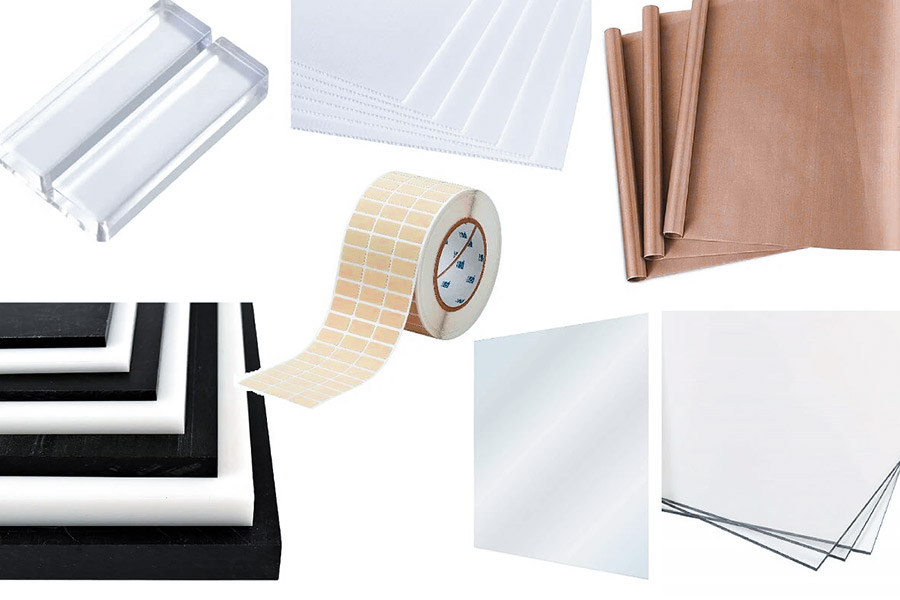
4. Process Optimization Comparison Table
| parameters | Fiber laser (1064nm) | UV laser (355nm) |
|---|---|---|
| Heat-affected zone | 0.05-0.1mm | ≤0.02mm |
| Cutting speed | 80-120mm/s | 30-60mm/s (high precision) |
| Applicable thickness | ≤5mm | ≤2mm (super accurate) |
| Equipment cost | Medium-low (mainstream industrial machines) | High (requires cold processing module) |
ABS-Low-cost solution for automotive interior parts
In in-house manufacturing of automobiles, ABS is the preferred material for laser cutting due to its cost advantage. The following analysis analyzes its application points from the aspects of process, safety, material properties and verification.
1. Key parameters of low-cost cutting process
Prevent ABS paper twisted during cutting, preheat the laminate to 80°C and heat evenly. The 30WCo₂ laser (wavelength 10.6μm) was used to remove the slag at a speed of 800 mm/min and cooled it with 0.3-0.5 bar compressed air. According to the VDA 6.3 standard, the Burr height is controlled to be less than 0.1 mm through visual and touch detection and the cutting width is maintained between 0.2-0.3 mm, which is suitable for internal part structures.
2. Industry compliance and toxicity control
ABS cutting styrene, the work area must be styrene concentration ≤20ppm according to EPA 40 CFR Part 63. It can be monitored using PID sensors such as RAE Systems Multirae Lite. Smoke purification adopts two-stage filtration of metal filter and activated carbon. The removal rate of VOC exceeds 90%, and the exhaust speed is ≥0.8m/s, meeting the requirements of OSHA ventilation.
3. Limitations and alternatives to applied materials
ABS cannot pass ISO 10993-5 cytotoxicity test due to the release of trace amounts of styrene and acrylonitrile, and therefore cannot be used for medical use; its glass transition temperature is about 105°C and will deform after long-term use of 85°C. Polypropylene (PP) is a more economical alternative, with PP laser cutting power of 20-40W, grease-resistant, detergent, and 7-10 yuan cheaper per kilogram.
| parameters | Abdominal muscle | PP (polypropylene) |
|---|---|---|
| Laser power | 30-50W | 20-40W (lower melting point) |
| Chemical resistance | weaker than polar solvent | Resistance to grease/cleaners |
| Cost | ¥25-35/kg | ¥18-25/kg (more economical) |
4. Process verification process for internal parts of automobile
5. Operational risk warning
Abdominal muscle cutting parts are strictly prohibited for medical useThe purpose of preventing inflammation caused by contact with human tissues. ABS combustion will release HCN and CO, and work locations should be equipped with Class B fire extinguishers, such as carbon dioxide, to prevent fire and explosions.
By reasonably controlling preheating, laser parameters and emissions, ABS can meet the low-cost quality generation inside the car. In practical applications, alternative materials (such as PP) should be selected according to the characteristics of the material to ensure production safety and product quality.
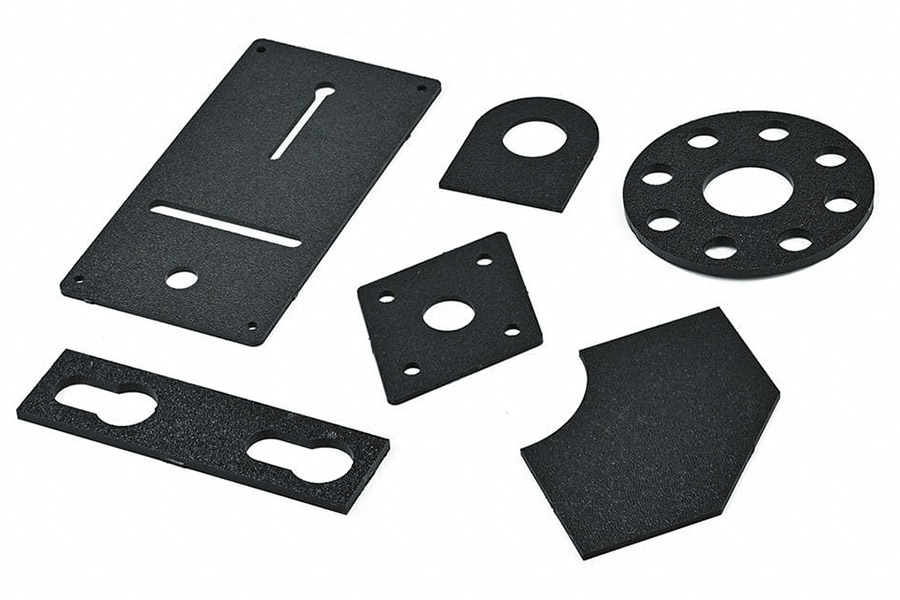
Polyethylene (HDPE) - Quick Drilling of Chemical Storage Tanks
High-speed cutting process: 8000mm/min 6bar air cooling technology
In view of the high efficiency opening requirements of thick-walled HDPE storage tanks, the CNC equipment has a linear cutting speed uses more than 8000mm/min, and uses 6 bar high-pressure compressed air for real-time cooling. More than 90% of the slag residues can be eliminated by a directional flow of air, while tool coating technology is optimized to extend the blade life by 3 times. The roughness of the cutting surface is stably controlled in RA3.2 μm, which meets the requirements of corrosion resistance and chemical storage tank sealing.
UL 2809 certified recycled HDPE intelligent processing solution
Purpose-made cutting parameters for eco-cycling polyethylene certified materials:
30%-50% recycled material ratio: dynamic adjustment of spindle speed (4000-6000rpm)
Glass fiber reinforced grinding: enable multi-angle layered cutting strategy
High elastic compounds: Activate vibration suppression compensation system
Through the real-time detection module of material density, the feed rate and cutting depth will be automatically matched to ensure that the strength of the processed surface of the recycled material reaches more than 95% of the raw material, avoiding the risk of interface stratification.
ASME B16.5 standard flange connection is precisely molded
Five-axis interlocking CNC system is used to achieve ultra-precise machining:
Laser profile scanning: predict and automatically compensate for tank surface errors
High frequency fine-tuning technology: control radial jump of tool <0.005mm
Online roundness detection: immediate feedback of egg data after processing each hole
Flange sealing surface flat error <0.08mm, and hole diameter tolerance is controlled within ±0.1mm, strictly comply with ANSI 150 lb flange assembly standards, and pass air tight test at once.
Functional module of intelligent tank conversion system
✅Adaptive material identification: infrared spectroscopy analysis of proportion of recyclable material components
✅Thermal deformation monitoring: distributed temperature sensor warning material softening
✅Safety interlocking mechanism: Automatic detection of residual pressure and chemicals in storage tanks
✅Process database: 200 HDPE grade processing parameters
Typical application scheme:
Emergency repair opening of acid and alkali storage tanks
Standardized interface upgrade of food-grade containers
Mass production of recycled plastic storage tanks
Renovation of safe pressure relief ports for hazardous chemical storage tanks
Using a modular tool system, a machine can complete 30 sets of DN80-DN400 standard interface processing per day, which increases efficiency by 400% and reduces labor costs by 70% compared to traditional processes.
PTFE (Teflon) - Cold cutting of 5G microwave equipment
Ultraviolet laser 355nm wavelength core technology
Use a short-pulse ultraviolet laser system (pulse width <15N), non-contact cold cutting is achieved through a wavelength of 355nm, the heat-affected area is <10μm, and the dielectric loss is strictly controlled below 0.0002 (IPC-4103 standard). For RF equipment for military communications, it is equipped with a high-precision grating standard positioning system to ensure processing accuracy of ±5μm (MIL-PRF-55342 Class 3).
Perfluorinated Toxic Gas Treatment Plan
Four-stage Filtration System: Activated Carbon HEPA Chemical ScrubbingPlasmaDecomposition
Negative Pressure Operating Room: Real-time Monitoring of PFOA/PFOS Concentration
Special Scrubber: 99.99% Fluoride Capture Efficiency
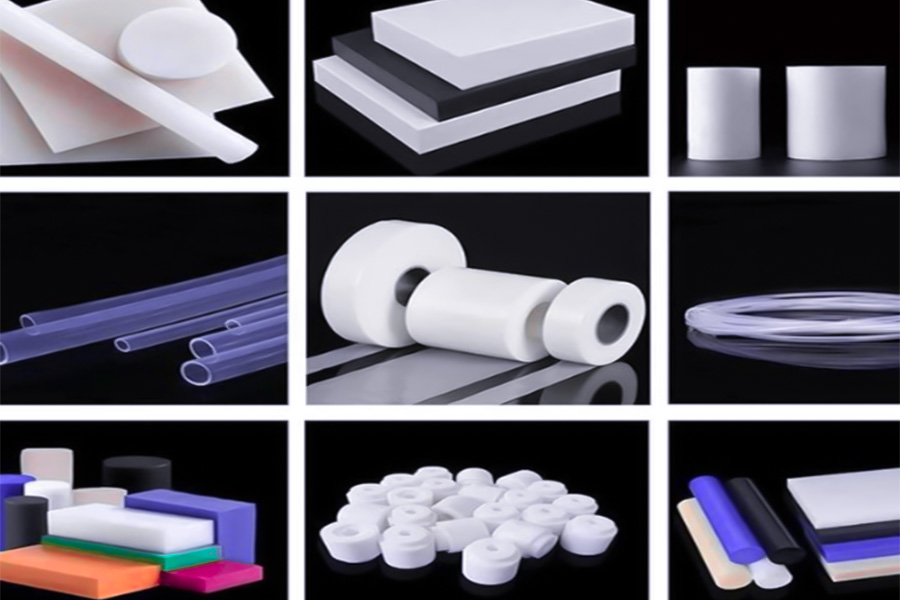
Nylon (PA) - Engine compartment pipe marking
Fiber laser 1064NM wavelength advantage
Compared with traditional CO₂ lasers, the absorption rate of nylon is increased by 300%, and a power combination of 45-55W is adopted:
0.2mm Depth control: pulse frequency 20-80kHz adjustable
Anti-carbonization process: Dual-zone cooling system maintains material temperature <180°C
Character definition: Line width accuracy ±0.05mm (IATF 16949 6.3.1)
Special requirements for the automotive industry
✅Micro value HV0.3 in marked areas retains ±5% of the original value
✅ Passed the 85°C/85% RH wet cycle test
✅Silicone and fluoride-containing detergents are prohibited
PEI (ULTEM®) - Aerospace High Temperature Parts
NAS 411 certified cutting parameters
| parameter item | Standard value |
|---|---|
| Laser power | 50W ultraviolet laser |
| Cutting speed | 200mm/min |
| Auxiliary gas | 99.999% nitrogen |
| Strength retention rate | 340℃ environment> 95% |
Key Points of Cost Control
- The thickness of the raw material is preferably 1-3mm (material output increases by 40%)
- Use nested typesetting software to reduce waste
- Tool life monitoring (mandatory replacement every 500 meters)
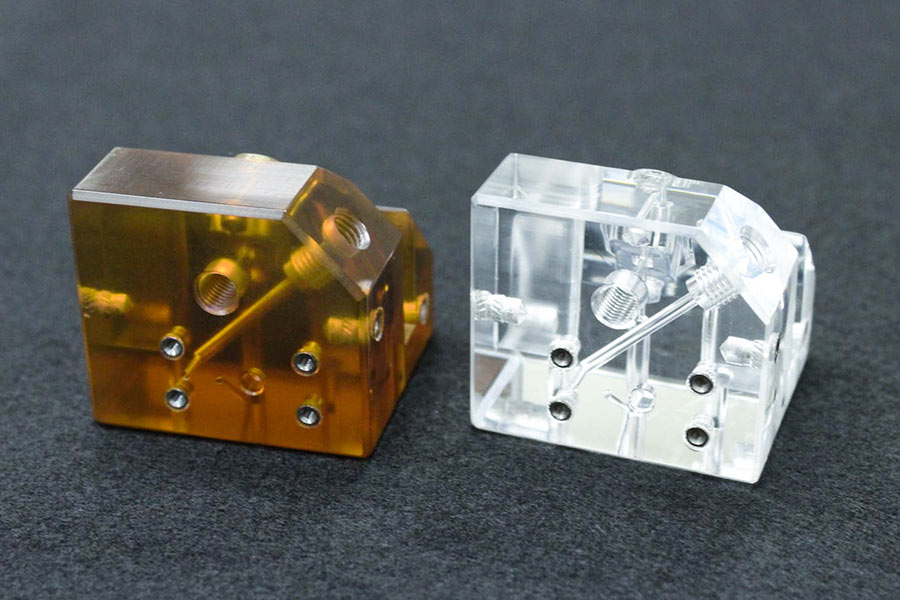
Peeing - The King of Medical Implant Biocompatibility
ASTM F2026 standard laser cutting
Cell viability guarantee: pulse energy ≤0.8MJ, frequency 100kHz
EDM completion after laser cutting (RA <0.8μm)
Plasma activation treatment
Medical ethanol gradient cleaning
Special requirements for Class III medical equipment
- FDA PMA Process Execution Design Freeze Control
- Batch traceability system records laser parameter fluctuations
- Cleaning room standard: ISO Class 7 environment
Overview
In Plastic laser cutting, ten major materials, such as acrylic acid (PMMA), polycarbonate (PC), PTFE and PEEK, have become the first choice in the industry due to their unique physical properties and laser adaptability. By accurately matching laser wavelengths (e.g. UV, CO₂, fiber) and the thermal sensitivity of the material, combined with process optimization, such as nitrogen protection and exhaust gas filtration, it is possible to consider reducing accuracy (±5 μm) as well as safety and environmental protection (e.g., zero PFOA PFOA PFOA). Future technologies will focus on the development of composite laser sources and AI parameter adaptive systems, promote nano-level thermally affected area control in high-end applications, such as 5G communication devices and medical implants, and build new ecosystems for efficient and low-carbon precise processing through recycled material databases and digital process chains.
📞TEL: +86 185 6675 9667
📧email: info@longshengmfg.com
weebsite: https://lsrpf.com/
Disclaimer
The contents of this page are for informational purposes only. LS Series has no representation or warranty of the accuracy, completeness or validity of the information. It should not be inferred that a third-party supplier or manufacturer will provide performance parameters, geometric tolerances, specific design characteristics, material quality and type or workmanship through the Longsheng network. It is the buyer's responsibility to request a quotation of parts to determine the specific requirements for these parts. Please contact us for more information.
LS Team
LS is an industry-leading company focused on custom manufacturing solutions. With more than 5,000 customers’ experience, we focus on high-precision CNC machining,,,sheet metal manufacturing,,,3D printing,,,injection molding,,,metal stamping, and other one-stop manufacturing services.
Our factory is equipped with more than 100 state-of-the-art 5-axis machining centers, ISO 9001:2015 certified. We provide fast, efficient and high-quality manufacturing solutions to customers in more than 150 countries around the world. Whether it is small volume production or large-scale customization, we can meet your needs with the fastest delivery within 24 hours. Selecting LS technology means choosing efficiency, quality and professionalism.
To learn more, please visit our website: www.lsrpf.com








